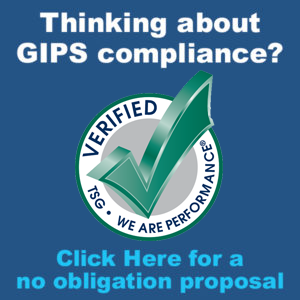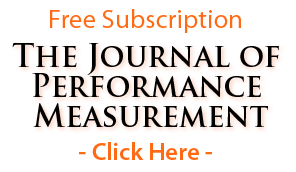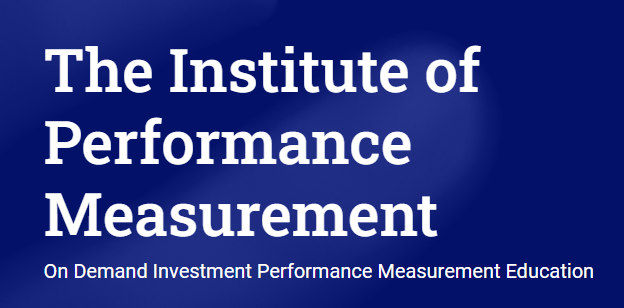GIPS® Tips
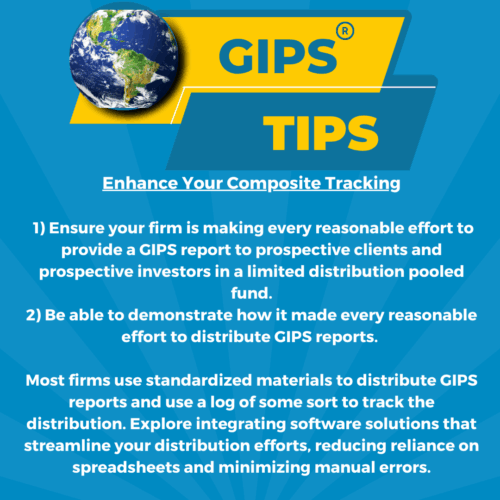
Experience “White Glove” GIPS Standards Verification With TSG
Are you tired of being treated like just another number by your GIPS verifier? At TSG, we prioritize your satisfaction and success above all else.
Partnering with us means gaining access to a team of seasoned GIPS specialists dedicated to delivering unparalleled service and exceptional value. Whether you’re seeking a new verifier, preparing for your initial verification, or just starting to explore GIPS compliance, TSG is the best choice.
Why Choose TSG?
Unmatched Expertise: Our experienced team brings unmatched proficiency in the GIPS standards, ensuring thorough and efficient (not “never-ending”) verifications.
Personalized Support: We understand that the journey toward GIPS compliance is complex. That’s why we offer ongoing support and guidance as needed, as well as access to a suite of exclusive proprietary tools, designed to make compliance and verification as easy as possible for you and your firm.
Actionable Insights: When you choose TSG, you will work with ONLY highly experienced senior-level GIPS and performance specialists. Their expertise translates into actionable advice, helping you navigate the complexities of the Standards in the most ideal way for your firm.
Hassle-Free Experience: At TSG, we guarantee your satisfaction and we do not lock our clients into long-term contracts.
Ready to Experience the TSG Difference?
Take the first step toward a better GIPS standards verification. Schedule a call or request a no-obligation proposal today at GIPSStandardsVerifications.com.
The Journal of Performance Measurement®
This month’s article brief spotlights “Essential Skill Sets for an Investment Performance Analyst” by Christine Iannacone, CIPM of Prudential Financial and Debi Rossi, CIPM, of Kyza Performance Consulting. It was published in the Spring 2025 issue of The Journal of Performance Measurement. You can access this article by subscribing (for free) to The Journal (link here).
The role of an Investment Performance Analyst requires a combination of technical knowledge and soft skills. As data complexity and regulatory requirements grow, professionals in this field must master return calculations, financial concepts, modern technology, and effective communication. This article outlines the key competencies needed to excel in the profession and offers insight into career development within investment performance.
To confirm your email address, click the graphic below. If you’re a subscriber but haven’t received a link to the current issue, please reach out to Doug Spaulding at DougSpaulding@TSGperformance.com.
PUZZLE TIME
Congratulations to all of you who submitted the correct answers:
- Stephen Campisi
- Anthony Howland
- Michael Margulis
- Alan Le
Answer To Harvard 1869 Admissions Exam Algebra Problem
The Watch, Chain, and Locket Problem:
Question: A man bought a watch, a chain, and a locket for $216. The watch and locket together cost three times as much as the chain. The chain and locket together cost half as much as the watch. The task is to find the individual cost of each item
Let the prices of the items be denoted w for watch, c for chain, and l for locket.
Altogether the cost is $216:
w + c + l = 216
The watch and locket cost 3 times the chain.
w + l = 3c
And the chain and locket cost half as much as the watch. In other words, two chains and two lockets would cost as much as the watch.
c + l = w/2
2c + 2l = w
We have a system of 3 equations:
(I) w + c + l = 216
(II) w + l = 3c
(III) 2c + 2l = w
Equation II indicates the value of the sum of the watch and the locket is 3 chains. This can be substituted into the first equation, which also has the sum of the watch and the chain. This leads to:
3c + c = 216
4c = 216
c = 54
Now we substitute the value of the chain into equations II and III.
w + l = 3c = 3(54) = 162
2c + 2l = w
108 + 2l = w
We can substitute w = 108 + 2l into the equation equaling 162 to get:
(108 + 2l) + l = 162
108 + 3l = 162
3l = 54
l = 18
We now have to solve for the price of the watch. We know the chain is 54 and the locket is 18. Since all three add up to 216, we can solve:
w + c + l = 216
w + 54 + 18 = 216
w = 144
We have solved for the price of each item, where each value is in dollars:
w = 144
l = 18
c = 54
Sources
The entire Harvard exam (PDF)
http://graphics8.nytimes.com/packages/pdf/education/harvardexam.pdf
Upcoming Webinars / Surveys
In Case You Missed It…
Webinar Replay: Should Your Firm Pursue GIPS® Compliance and Verification?
Webinar Replay: Recently Published SEC Marketing Rule FAQ
Article Submissions
The Journal of Performance Measurement® Is Currently Accepting Article Submissions
The Journal of Performance Measurement is currently accepting article submissions on topics including performance measurement, risk, ESG, AI, and attribution. We are particularly interested in articles that cover practical performance issues and solutions that performance professionals face every day. All articles are subject to a double-blind review process before being approved for publication. White papers will also be considered. For more information and to receive our manuscript guidelines, please contact Douglas Spaulding at DougSpaulding@TSGperformance.com.
Submission deadlines
Winter Issue: January 12, 2026
Spring Issue: March 30, 2026
For any questions, please reach out to Doug Spaulding at DougSpaulding@TSGperformance.com.
Book Review
Andrew Carnegie, by David Nasaw
Review by David D. Spaulding, DPS, CIPM

This rather long (800 pages) biography of one of America’s most famous industrialists, Andrew Carnegie, covers just about all aspects of his life.
In his introduction, the author wrote “The biographer is often asked at the conclusion of his project whether he has grown to like or dislike his subject. The answer of course is both.”
This surely applies to the biography’s reader, as well.
One cannot help but admire this rags-to-riches man, who came from the humblest of beginnings to rise to become the wealthiest man in the world. Brought to America at a young age by his parents, he soon quit school to add to their meager income. His father was described as being shiftless, aimless, no earth-shaker, a weakling, and a man who lacked industry, thrift, go-aheadness [sic], and intelligence. His mother became the chief breadwinner, and set an example for young Andrew that stayed with him.
Early on, he developed a love of reading. Because there were no “free” libraries at the time, he had a difficult time finding books to read, but he eventually succeeded, and was able to read constantly. With just four years of schooling, the books provided him with a way to gain knowledge and intelligence.
He gained prominence in the latter part of the 19th century and into the 20th. Early on, he claimed to be a supporter of the working man and unions. However, over time this clearly did not hold true, as, for example, he directed his company’s CEO to do all he could to bust-up the unions, which they succeeded in doing. He required many of those who worked for him to work 12-hour days, seven days a week, for low wages.
Many of his wise moves, along with his imagination, drive, and negotiating skills, resulted in his firm growing in importance and dominance. He eventually sold it to J.P. Morgan, and it grew into U.S. Steel. The result of the sale was that Mr. Carnegie became very, very wealthy, the equivalent of a multi-billionaire today.
Carnegie’s attitude towards his wealth perhaps served as an example for today’s Warren Buffett: a goal to give it all away. When he retired, he set about doing just that. And, like John D. Rockefeller, a contemporary though less wealthy man, he found it quite difficult to do so, though he did succeed in many ways. Perhaps most notably was in creating libraries, thousands of them, around the world. Many bear his name, though this was never a requirement. He founded schools, including Carnegie Institute of Technology, which is today’s Carnegie Mellon University.
Unlike Mr. Buffett, who seems content to live in the same home he’s had for decades, Carnegie built mansions, in both Manhattan and Scotland, the home of his birth. He thoroughly enjoyed is wealth. In Scotland, in addition to his many servants, he had a full-time bagpiper, who played at 7 AM to wake everyone [he often had many guests staying with him and his family], as well as throughout the day. In addition, he had a full-time organist, to perform at various times throughout the day.
One cannot also help but grow tired of this pompous, arrogant, egotistical man, who lectured several presidents (including Theodore Roosevelt, William Howard Taft, and Woodrow Wilson) and others. He frequently thought he knew more than anyone else. Even his friends, such as Samuel Clemens (Mark Twain) would grow tired of his behavior.
We can therefore see how this author would both like and dislike his subject. This reader did, as well.
Often, when reading a biography of a successful person, I come away with ideas to put to use; I will confess none come to mind from this book. I did find myself occasionally seeing similarities between myself and Carnegie. My father, too, lacked many of the qualities of his; and like his mother mine was my family’s chief (actually, sole) breadwinner. In many ways, she served as a great example for me, and I learned a great deal from her.
I very much enjoy reading about these figures who loomed large in the industrial revolution. They contributed in many ways to America’s early success. They, like us, were human, and so are a mixed bag of qualities, characteristics, and attributes. Like today’s Elon Musk, we no doubt can see things we admire, as well as things we disagree with and perhaps even find abhorrent. Often we find lessons, as well.
And yes, despite its massive size, I recommend it. The book is extremely well written and keeps the reader’s attention.
Issue Contents:
The Voice
Five Questions with a TSG Verifier
Each month, our intern Jesse Teller will sit down with one of TSG’s senior verifiers to ask five questions, ranging from how they got started in the field to their perspectives on the industry’s future. The goal is to give our readers a personal look at the professionals behind TSG’s verification and consulting work, and to share lessons learned from years in the industry.
The second interview in this series features Jennifer Barnette CIPM, one of TSG’s Senior Consultants, and a key member of our verification team. Jen shares her journey into performance measurement, her perspective on how technology is shaping the field, and practical advice for those looking to build a career in this space. Her insights highlight the mix of technical skill, curiosity, and conceptual understanding that makes performance measurement both challenging and rewarding.
“To succeed in performance measurement, it’s essential to focus on strong technical skills and a solid understanding of the concepts behind what you’re calculating. On the technical side, mastering Excel is a must. You’ll often work with large and sometimes messy data, so being comfortable with things like advanced formulas and pivot tables, can improve how efficiently and accurately you work.“
— Jennifer Barnette, CIPM
How did you decide on a career in performance measurement?
I didn’t set out thinking I’d end up in performance measurement, it kind of happened over time. Early on, I was in roles that involved reporting and working with investment data, and I found that I liked digging into the numbers and understanding them. That’s what led me to the CIPM program. I wanted to really understand return methodologies, performance evaluation, and especially the GIPS standards. The CIPM helped me connect all the dots and gave me a solid foundation.
How do you think the progression of AI or automation will impact this field in the foreseeable future?
To succeed in performance measurement, I’d say it’s essential to focus on strong technical skills and a solid understanding of the concepts behind what you’re calculating. On the technical side, mastering Excel is a must. You’ll often work with large and sometimes messy data, so being comfortable with things like advanced formulas and pivot tables, can improve how efficiently and accurately you work. As you grow in the role, skills in SQL or even Python can help automate reporting or pull data from different sources. While I don’t see Excel going away anytime soon, there’s real value in being curious and open to new tools. You don’t need to be a machine learning expert, but even understanding what’s possible with AI or how to automate repetitive tasks can make your work faster and smarter, and keep you ahead of the curve. Think of Excel as your foundation, and tools like AI as ways to level up from there.
What skills should someone focus on to build a career in performance measurement?
Overall, I’d say the sweet spot is combining strong technical skills with a deep understanding of performance. Just as important as the technical know-how are the concepts behind the numbers. Understanding the principles and equations behind time-weighted and money-weighted returns, helps you spot issues and explain performance with confidence, not just calculate it. It’s not just about running numbers but knowing what they mean and are how they tie back to investment decisions.
What advice would you give to a college student without prior experience in performance measurement?
What I love about the performance space is that it’s actually very welcoming to people coming in from related roles like fund accounting, operations, client reporting, or even compliance. If you’ve got an analytical mindset, strong attention to detail, and you’re willing to learn the concepts, there’s definitely a path in, and I’ve seen people grow into really rewarding careers this way.
Quote of the Month
“Those who keep reading keep rising in life.”
– Charlie Munger
Industry Dates and Conferences
Celebrating 35 Years of Excellence: What to Expect From TSG in 2025
As TSG marks its 35th anniversary, we’re thrilled to announce a dynamic lineup of events, learning opportunities, and networking activities designed to elevate your performance measurement expertise and strengthen our vibrant community. Here’s what’s in store for the year ahead:
October: Come See Us (First Rate Wealth Tech)
- October 16th: First Rate’s Wealth Tech Conference – John D. Simpson will be hosting a roundtable on After-Tax Benchmarks.
November: Fall EMEA Forum in Copenhagen
- November 6th-7th: Performance Measurement Forum (EMEA) – Copenhagen, Denmark – Expand your perspective with insights from global leaders at our fall meeting in Denmark.
- November 11th-12th: GIPS Annual Conference – Phoenix, AZ
December: Year-End Wrap-Up in Louisville
- December 3rd: Fall Asset Owner Roundtable (AORT) – Louisville, KY – Advanced discussions to round out the year.
- December 4th-5th: Fall North American Forum – Louisville, KY – Close the year with innovation and collaboration.
Celebrating 35 Years of Excellence
- We take immense pride in our legacy of success, innovation, and leadership. As we look ahead, TSG remains committed to advancing the field of investment performance measurement and empowering professionals worldwide.
Mark Your Calendars! Let’s make 2025 a year to remember.
For information on the 2025/2026 events and membership opportunities, please contact Patrick Fowler at 732-873-5700.
Institute / Training
Inside the Institute: A Fresh Perspective
Institute.TSGperformance.com
Link to the Class: Module 4: Risk
By Jesse Teller
Module Four Reflection – Understanding and Quantifying Risk
Module Four, once again led by John, focused on one of the most essential pillars of performance measurement: risk. Unlike return, which is relatively straightforward to calculate, risk is multifaceted and influenced by a wide range of factors, many outside the investor’s control. Market volatility, changes in interest rates, geopolitical events, and even investor sentiment can all shape a portfolio’s risk profile.
John’s instruction broke down this complexity into clear, measurable components. The module covered key risk metrics such as standard deviation, which quantifies the dispersion of returns to assess volatility, and beta, which measures a portfolio’s sensitivity to market movements relative to a benchmark. He also explained how models like the Capital Asset Pricing Model (CAPM) can be used to estimate expected returns based on systematic risk.
Importantly, John discussed risk-adjusted performance measures such as the Sharpe Ratio, which evaluates whether excess return is sufficient to justify the level of risk taken. These concepts go beyond simply calculating returns and help performance professionals assess whether results were achieved efficiently.
Compared to Module Three on return attribution, this content felt more familiar, allowing me to engage deeply with the material. John’s slides were well-sequenced, reinforcing each concept step by step, and his explanations bridged theory with practical application.
Overall, Module Four not only refreshed my knowledge of core risk metrics but also emphasized their role in telling a more complete performance story. Understanding how to pair return data with these risk measures allows for better evaluation of whether results were achieved efficiently, an essential skill for performance professionals.
That’s a Good Question
- the difference in the annualized portfolio return and the annualized benchmark return? Or,
- the annualization of the difference in the cumulative portfolio return and the cumulative benchmark return?
John’s response to client:
Potpourri

Compliance Corner
Webinar replay: SEC Marketing Rule FAQs with Lance Dial, Partner, K&L Gates and David Spaulding, DPS, CIPM, TSG Listen as Lance and Dave dive into issues that have challenged advisors since the rule went into effect.
They focus on the SEC’s recently published guidance, addressing:
- Extracted Performance
- What Constitutes Performance (including risk, yield, contribution, and attribution)
- Methodology for Calculating Gross and Net Returns
They walk through each area and unpack the implications for your firm while sharing practical insights to help you align your performance reporting with regulatory expectations. Click Here to Access the Recording.
ATTN: TSG Verification Clients
As a reminder, all TSG verification clients receive full, unlimited access to our Insiders.TSGperformance.com site filled with tools, templates, checklists, and educational materials designed to make compliance and verification as easy as possible for you and your firm.
Contact CSpaulding@TSGperformance.com if you have any questions or are having trouble accessing the site.
TSG Milestones
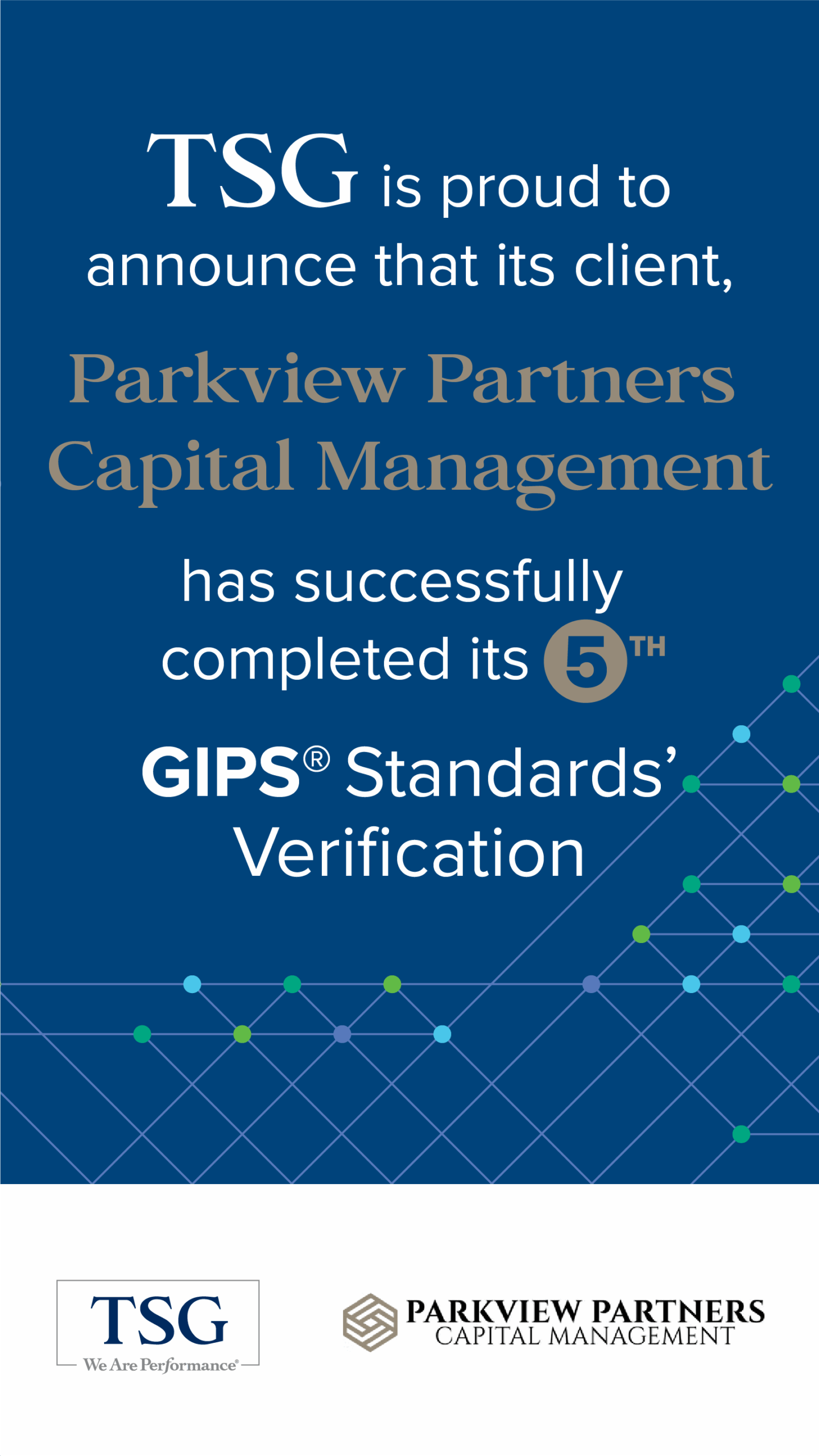
In this section, we will introduce a word we think is a bit unusual or interesting. We hope you enjoy it. And please feel free to send us your suggestions.
Cerebrate
Our firm’s founder and CEO, Dave Spaulding, engaged in a week of thinking earlier this year, patterned after Bill Gates’ bi-annual “Think Weeks.” He devoted the week to focusing on both himself, as an individual, as well as TSG.
Prior to the start of this adventure, he discovered a word that he feels is far superior to the common word “Think,” and that word is cerebrate. Dictionary.com defines it as a verb, “to use the mind; think or think about.”
Related words are cerebration (“the act of thinking; consideration; thought”) and cerebrating. The word is linked to cerebral, and is derived from the Latin “cerebrum,” which means “brain.”
And so, Dave likes to refer to his week as his “cerebration week.” We think Mr. Gates would approve.
GIPS® is a registered trademark owned by CFA Institute. CFA Institute does not endorse or promote this organization, nor does it warrant the accuracy or quality of the content contained herein.
